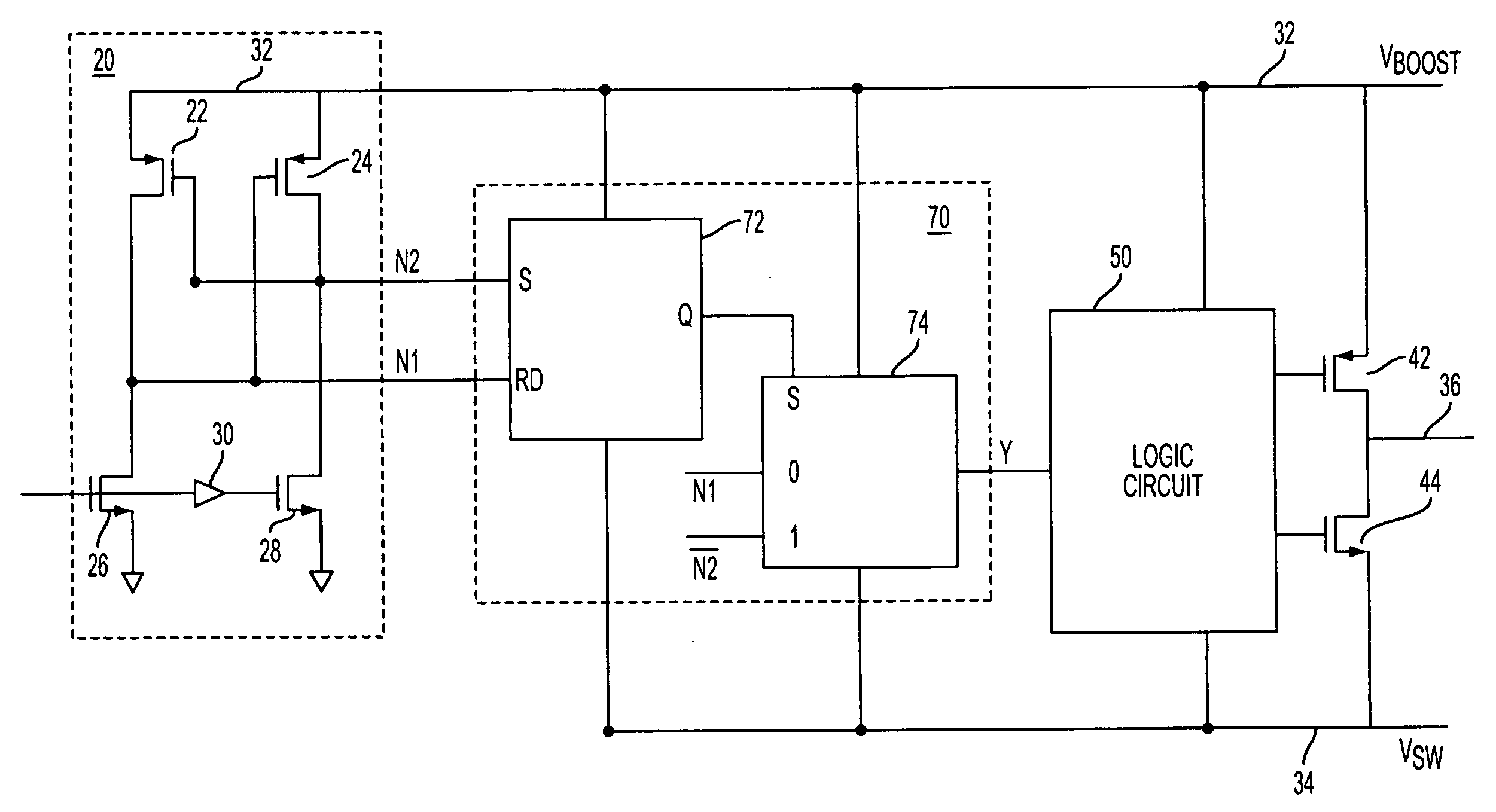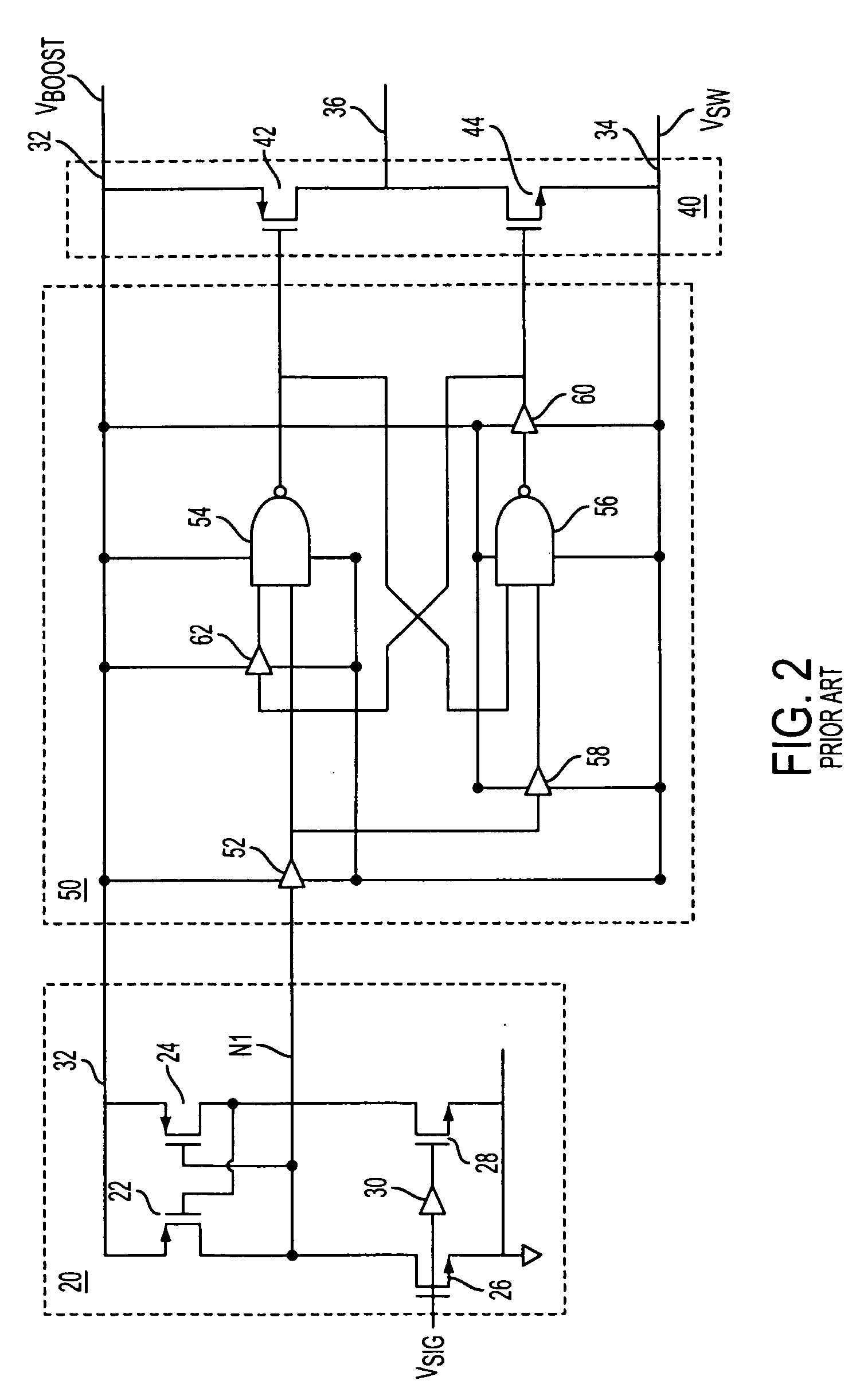Level shift delay equalization circuit and methodology
a delay equalization and level technology, applied in the field of level shifters, can solve the problems of causing a first delay and causing a greater delay
- Summary
- Abstract
- Description
- Claims
- Application Information
AI Technical Summary
Benefits of technology
Problems solved by technology
Method used
Image
Examples
Embodiment Construction
[0022] A delay equalization circuit 70 is shown in FIG. 4, interposed between input stage 20 and logic circuit 50 of the level shifting circuit. Input stage 20 and logic circuit 50 may comprise the same circuit element configurations as shown in prior art FIG. 2. Circuit 70 uses the fast High-to-Low transitions on N1 to control the Low-to-High transition of V36 and the High-to-Low transitions on N2 to control the High-to-Low transition of V36.
[0023] Circuit 70 comprises reset dominant latch 72 and data selection circuit 74. Line N1 is coupled to the reset input of latch 72. A line N2 is coupled to the set input of the latch. Line N2 is also coupled to the drain of FET 24. FET 24 is conductive when the input signal is at a high state and is nonconductive when the input signal is at a low state. The Q output of latch 72 is coupled to a select input, S, of data selection circuit 74. A line having the same signal state as N1 is coupled to a 0 input of the data selection circuit. A line...
PUM
 Login to View More
Login to View More Abstract
Description
Claims
Application Information
 Login to View More
Login to View More - R&D
- Intellectual Property
- Life Sciences
- Materials
- Tech Scout
- Unparalleled Data Quality
- Higher Quality Content
- 60% Fewer Hallucinations
Browse by: Latest US Patents, China's latest patents, Technical Efficacy Thesaurus, Application Domain, Technology Topic, Popular Technical Reports.
© 2025 PatSnap. All rights reserved.Legal|Privacy policy|Modern Slavery Act Transparency Statement|Sitemap|About US| Contact US: help@patsnap.com



